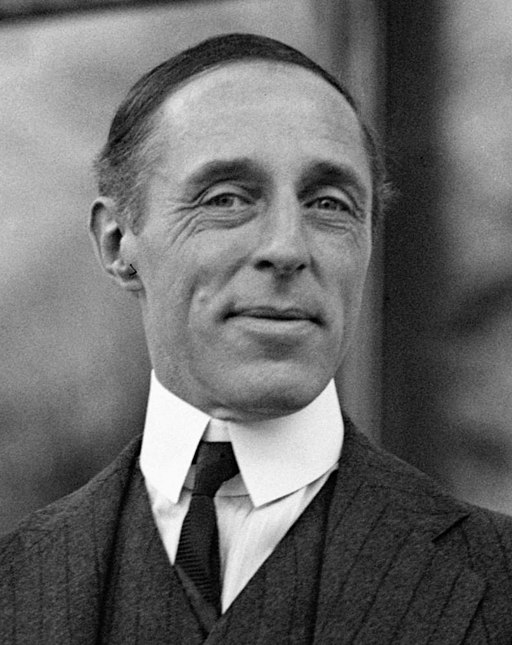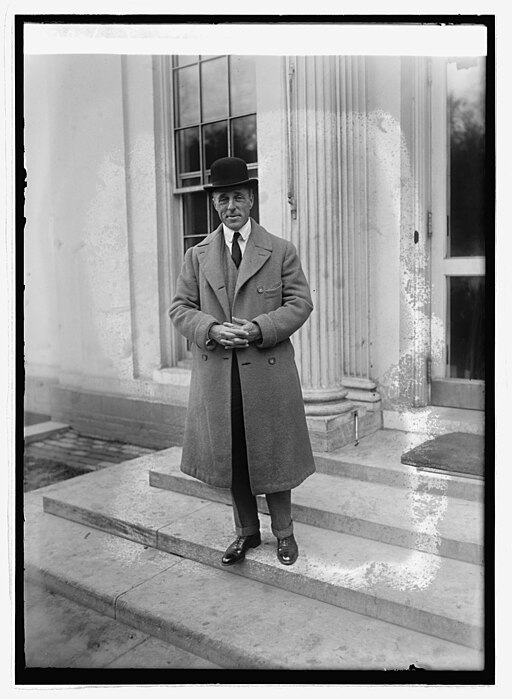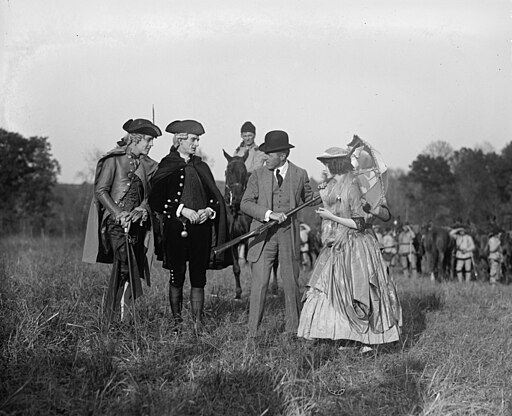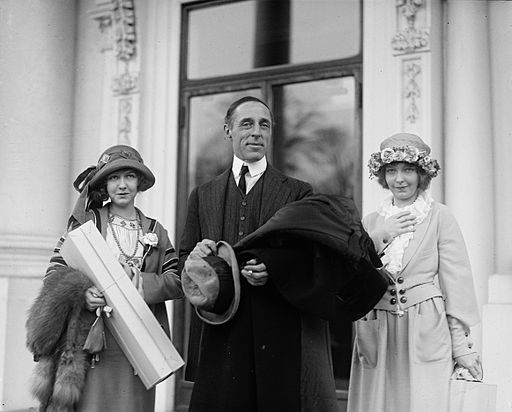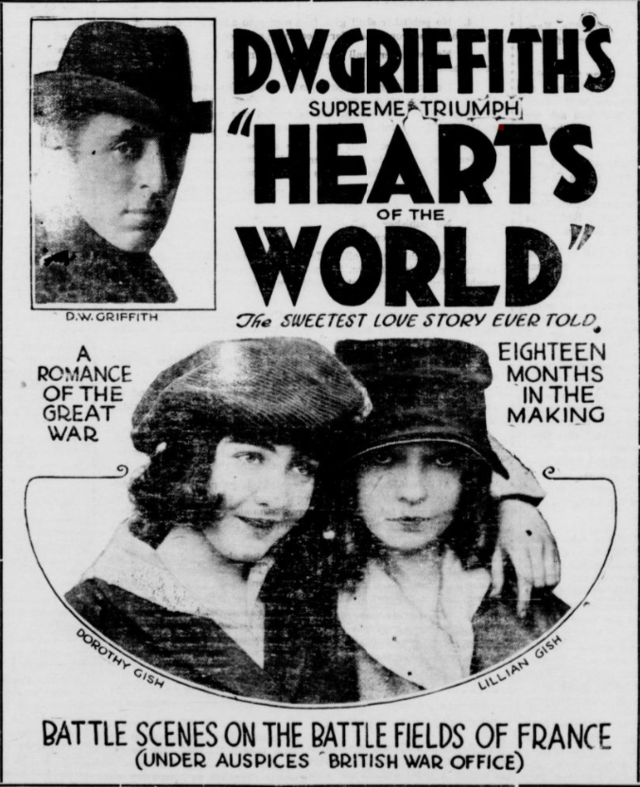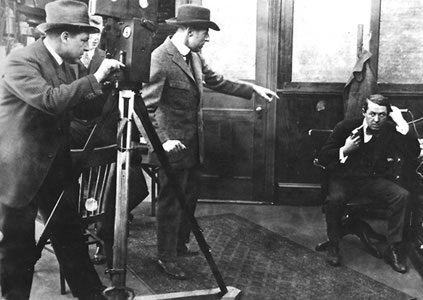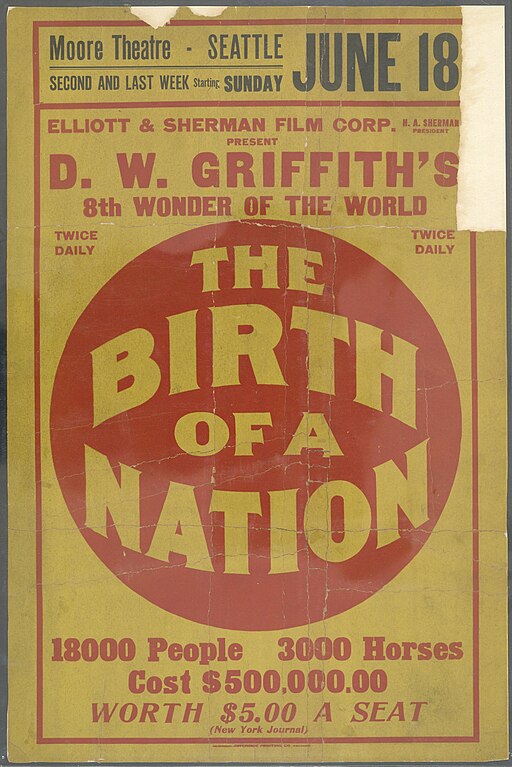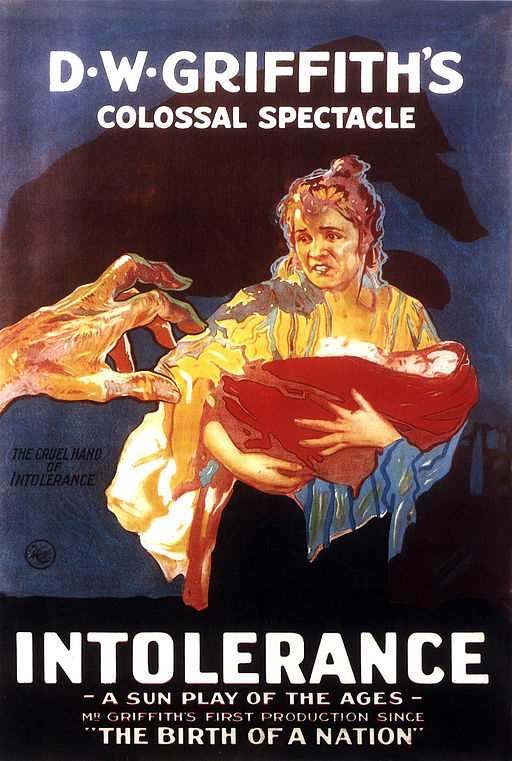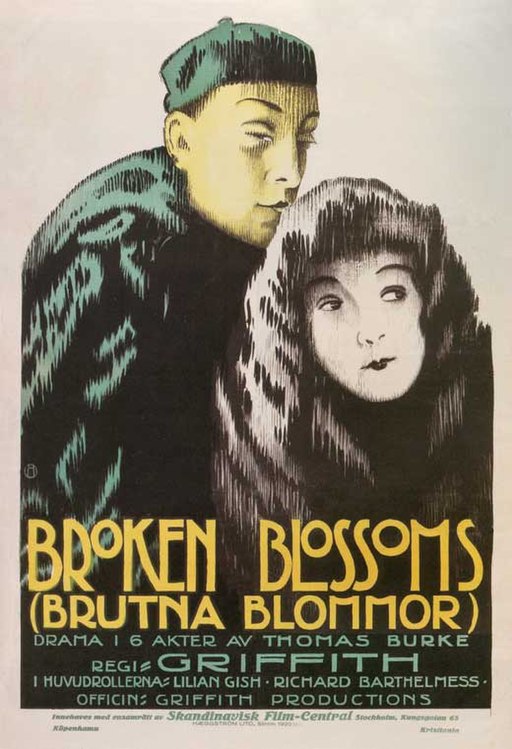D. W. Griffith
back| Full Name | David Wark Griffith |
| Born | January 22, 1875 |
| Birthplace | La Grange, Kentucky, USA |
| Died | July 23, 1948 |
| Buried | Centerfield Cemetery, Oldham County, Kentucky, USA |
| Married to | Linda Arvidson (1906–1936), Evelyn Baldwin (1936–1947) |
| Children | None |
| Notable films | The Birth of a Nation (1915) - Intolerance (1916) - Broken Blossoms (1919) - Way Down East (1920) - Orphans of the Storm (1921) |
D. W. Griffith
The Father of Modern Cinema
D.W. Griffith, born David Wark Griffith on January 22, 1875, in La Grange, Kentucky, was a pioneering American film director who revolutionized the art of cinema. Starting as a playwright and actor, Griffith transitioned to film at the dawn of the 20th century, rapidly advancing from actor to writer, and then to one of the most influential directors of his time. His early work with the Biograph Company showcased his innovative narrative techniques and mastery of visual storytelling.
Griffith's 1915 epic "The Birth of a Nation" was groundbreaking for its narrative structure and cinematic techniques, albeit controversial for its racist content and glorification of the Ku Klux Klan. In response to criticism, he released "Intolerance" (1916), a visually ambitious film intertwining four parallel stories from different historical periods. Other notable works include "Broken Blossoms" (1919) and "Way Down East" (1920), exemplifying his narrative skill and pioneering use of close-ups, parallel editing, and dramatic storytelling.
Despite his profound influence on film language and narrative, Griffith's career waned with the advent of sound cinema. He died on July 23, 1948, leaving a complex legacy as both a visionary filmmaker and a controversial figure in film history. His contributions laid the foundation for modern cinematic techniques and storytelling.
D.W. Griffith was often hailed as the 'Father of Modern Cinema.
Related
D. W. Griffith
Biography and Analysis of his Career
Early Life
D.W. Griffith was born in rural Kentucky and had a modest upbringing. His father, a Confederate Army colonel, died when Griffith was young, leaving the family in financial hardship.
Career Beginnings
Griffith started his career as a playwright and actor but found little success. He moved into film, where he began working at the Edison Studios and then Biograph Company, quickly moving up to become a director.
Rise to Prominence
Griffith's early works at Biograph were short films, through which he developed and refined his storytelling techniques. He experimented with narrative structures, camera angles, and editing, significantly contributing to the language of cinema.
Major Works
His most famous film, "The Birth of a Nation" (1915), was groundbreaking for its narrative and technical achievements but controversial for its racist portrayal of African Americans and glorification of the Ku Klux Klan.
"Intolerance" (1916) was Griffith's response to the criticism of his earlier work, a sprawling epic addressing themes of injustice over different eras."Broken Blossoms" (1919), "Way Down East" (1920), and "Orphans of the Storm" (1921) were other significant films that displayed his narrative skill and cinematic technique.
Innovations and Influence
Griffith is credited with pioneering modern cinematic techniques. His use of close-ups, cross-cutting, and dynamic camera movements revolutionized film narrative.
He also played a key role in establishing film as a serious art form.
Personal Life and Later Years
Griffith's personal life was less successful than his professional one. His marriage to actress Linda Arvidson ended in divorce, and his second marriage to Evelyn Baldwin also ended in divorce.
In his later years, Griffith's popularity waned with the advent of sound films. His style no longer appealed to the changing tastes of the audience.
Death and Legacy
Griffith died of a cerebral hemorrhage in 1948. Despite the controversy surrounding some of his work, particularly "The Birth of a Nation," he is remembered as one of the most important figures in the development of cinema. His contributions to film language and narrative continue to be studied and respected in the field of film history and theory.
Notable movies directed by D. W. Griffith:
1908:
"The Adventures of Dollie": Griffith's directorial debut about a child kidnapped and then heroically rescued.
1910:
"In Old California": A drama set in early California, notable for being one of the earliest films shot in Hollywood.
1911:
"The Lonedale Operator": A short drama about a brave telegraph operator thwarting a robbery.
1912:
"The Musketeers of Pig Alley": Considered one of the first gangster films, focusing on crime in New York City.
1913:
"The Battle at Elderbush Gulch": A western involving settlers defending themselves against Native Americans.
1914:
"Judith of Bethulia": An early feature-length film based on the biblical story of Judith and Holofernes.
1915:
"The Birth of a Nation": A landmark film in cinema history, but controversial for its portrayal of African Americans and the Ku Klux Klan.
1916:
"Intolerance": A massive epic interweaving four parallel stories from different historical periods.
1919:
"Broken Blossoms": A tragic tale of a Chinese immigrant and a young girl in London.
1920:
"Way Down East": A drama known for its exciting ice-floe rescue sequence.
1921:
"Orphans of the Storm": A period drama set during the French Revolution, focusing on two sisters.
1924:
"America": A historical film about the American Revolution.
1925:
"Sally of the Sawdust": A comedy-drama about a young woman raised in a carnival.
1928:
"The Battle of the Sexes": A comedy-drama exploring generational and gender conflicts.
1930:
"Abraham Lincoln": Griffith's first sound film, a biopic about the American president.
1931:
"The Struggle": A drama about alcoholism, marking Griffith's final film as a director.
D. W. Griffith and the Transition from Silent to Sound Movies:
D.W. Griffith, a pioneering figure in the silent film era, faced significant challenges during the transition from silent to sound movies, a period often referred to as the talkie revolution. This shift dramatically changed the landscape of filmmaking and presented difficulties for Griffith, both artistically and professionally.
Technological and Artistic Challenges
Griffith, like many of his contemporaries, initially struggled with the technical aspects of sound filmmaking. The early sound technology was cumbersome and limited the mobility of the camera, a stark contrast to the dynamic filming techniques Griffith had mastered in silent films.
Artistically, Griffith was more attuned to the visual storytelling of silent cinema, where emotions and narratives were conveyed through imagery, facial expressions, and body language. The introduction of dialogue and sound required a different approach to directing and acting, which did not align well with Griffith's established style.
Financial and Studio Constraints
The transition to sound films also came with significant financial challenges. The costs of upgrading equipment and producing sound films were substantial, and Griffith's independent status made it difficult for him to compete with well-funded studios.
Griffith's relationship with major studios, which could have provided the necessary resources for transitioning to sound films, was strained. He had a reputation for being difficult to work with and for going over budget, which limited his opportunities in Hollywood's new sound era.
Audience and Critical Reception
The audience's expectations had evolved with the advent of sound, and Griffith's later films, such as "Abraham Lincoln" (1930) and "The Struggle" (1931), did not resonate as strongly with the public or critics. They were considered outdated in style and storytelling compared to the works of emerging sound-era directors.
End of Career
The lack of commercial and critical success of his sound films led to the end of Griffith's career as a director. He was unable to adapt effectively to the new medium, leading to his gradual decline in the industry.
In summary, the transition from silent to sound films marked the decline of D.W. Griffith's illustrious career. His struggles during this period highlight the challenges faced by many silent-era filmmakers in adapting to new technologies and audience preferences. Despite these challenges, Griffith's legacy as a pioneer of cinematic language and storytelling techniques remains a significant part of film history.
Analysis of the Direction Style of D. W. Griffith:
D.W. Griffith's directorial style played a pivotal role in the evolution of cinematic language and narrative techniques. His work, particularly during the silent film era, laid the groundwork for many aspects of modern filmmaking. Here's an analysis of his style:
Innovative Storytelling Techniques
Griffith was a master storyteller who elevated the narrative complexity of film. He moved away from the static, stage-like presentation of early cinema, introducing techniques that made film a more dynamic and immersive medium.
Pioneering Editing Techniques
He is credited with popularizing cross-cutting (or parallel editing), a technique where two or more scenes in different locations are shown alternately to suggest they are happening simultaneously. This not only heightened dramatic tension but also allowed for more complex narratives.
Use of Close-ups
Griffith understood the power of the close-up to convey emotion and bring intimacy to the storytelling. He frequently used close-up shots of his actors to capture subtle facial expressions, making the emotional experiences of the characters more immediate and impactful for the audience.
Camera Movement and Framing
Moving away from stationary camera work, Griffith utilized various camera movements and angles to enhance storytelling. He experimented with panning, tracking, and tilting, providing viewers with different perspectives and a more dynamic visual experience.
Grandiose and Spectacular Sequences
In films like "Intolerance," Griffith demonstrated his ability to handle large-scale, spectacular sequences with hundreds of extras, elaborate sets, and complex choreography. These sequences were instrumental in expanding the scope and possibilities of film as an epic storytelling medium.
Emotional and Dramatic Depth
Griffith's films often dealt with intense emotional and social themes. He had a knack for creating dramatic tension and emotional depth, which was conveyed through both the performances he elicited from his actors and the cinematic techniques he employed.
Controversial Aspects
Despite his technical and narrative innovations, Griffith's work is also marked by controversy, particularly regarding racial representations. "The Birth of a Nation" is criticized for its glorification of the Ku Klux Klan and its racist portrayal of African Americans. This aspect of his work has sparked significant debate about his legacy in film history.
In summary, D.W. Griffith's directorial style was groundbreaking and influential, contributing significantly to the development of cinema as an art form. His techniques in editing, storytelling, and visual composition are foundational to modern filmmaking, even as aspects of his content remain controversial.
Remarkable Quotes from D. W. Griffith:
On the Art of Filmmaking:
"All I need to make a comedy is a park, a policeman, and a pretty girl."
Regarding Film as a Medium:
"The task I'm trying to achieve is above all to make you see."
On His Innovations:
"I am the man who invented the technique of the cinema. It is not me bragging; it is a simple truth."
His Vision for Cinema:
"Movies are written in sand: applauded today, forgotten tomorrow."
On Storytelling:
"What the modern movie lacks is beauty—the beauty of moving wind in the trees, the little movements in a beautiful face."
Reflecting on His Career:
"I’m particularly proud of my work in developing characters and telling stories about women. I consider that a major part of my contribution to the art."
On Cinema's Potential:
"The film must first and foremost be visual art."
Awards and Nominations:
D.W. Griffith, a pioneering figure in the early years of cinema, did not receive many formal awards during his lifetime, mainly due to the era in which he worked. The modern system of film awards, including the Academy Awards, was established after many of Griffith's major contributions to cinema. However, his work did not go entirely unrecognized:
Honorary Awards:
- In 1936, D.W. Griffith was awarded an Honorary Academy Award. The Oscar was presented to him for his "distinguished creative achievements as director and producer and his invaluable initiative and lasting contributions to the progress of the motion picture arts."
Posthumous Recognition:
- After his death, Griffith's work continued to be celebrated and acknowledged for its significant impact on the film industry.
- In 1953, the Directors Guild of America instituted the D.W. Griffith Award, its highest honor. However, due to the controversial nature of some of Griffith's work, particularly "The Birth of a Nation," the award was later renamed the DGA Lifetime Achievement Award
Complete Overview of Longer Movies Directed by D. W. Griffith:
Griffith directed well over 500 films, many of which were shorts produced in the early 1900s. Below is an expanded list that includes more of his notable works.
1908:
- The Adventures of Dollie
1909:
- A Corner in Wheat
- The Sealed Room
- The Country Doctor
- A Drunkard's Reformation
- The Lonely Villa
1910:
- In Old California
- The Unchanging Sea
- Ramona
1911:
- The Lonedale Operator
- Enoch Arden
- The Last Drop of Water
1912:
- The Musketeers of Pig Alley
- An Unseen Enemy
- The New York Hat
1913:
- The Mothering Heart
- The Battle at Elderbush Gulch
1914:
- Judith of Bethulia
1915:
- The Birth of a Nation
1916:
- Intolerance
1918:
- Hearts of the World
- The Great Love
- A Romance of Happy Valley
1919:
- Broken Blossoms
- True Heart Susie
- A Romance of Happy Valley
- Scarlet Days
1920:
- Way Down East
1921:
- Orphans of the Storm
- Dream Street
1922:
- One Exciting Night
1924:
- America
1925:
- Sally of the Sawdust
1926:
- The Sorrows of Satan
1928:
- Drums of Love
- The Battle of the Sexes
1930:
- Abraham Lincoln
1931:
- The Struggle

